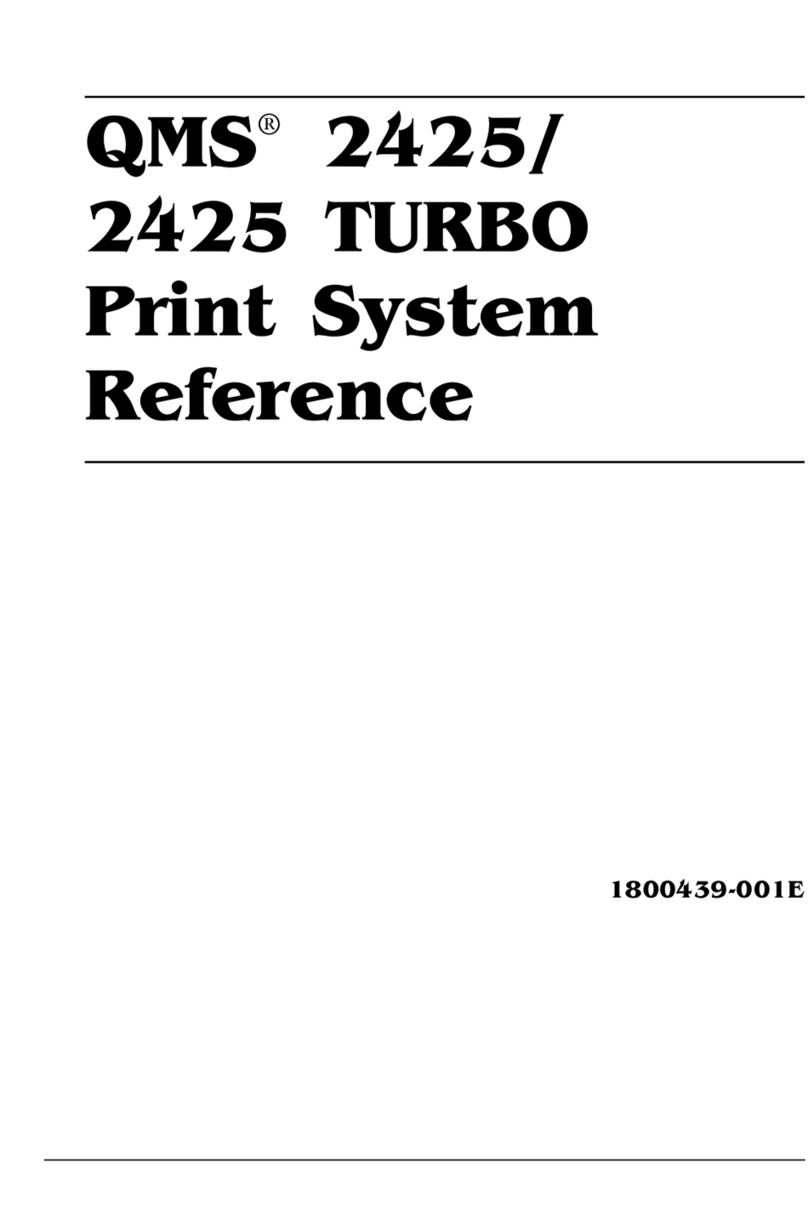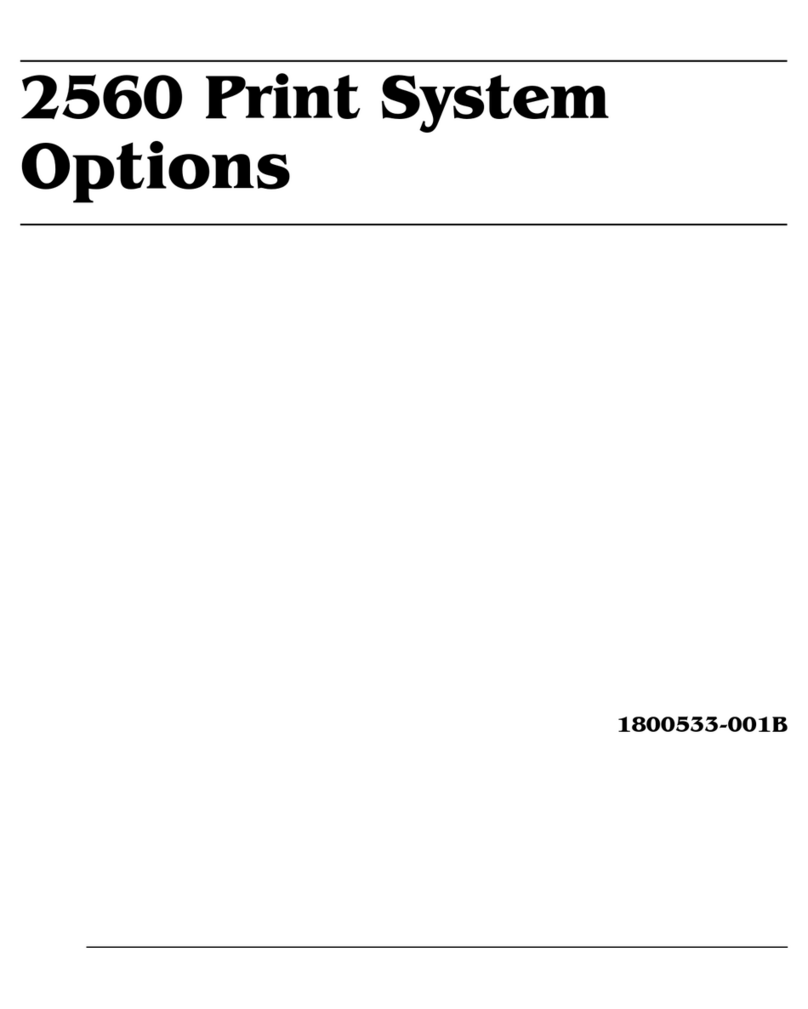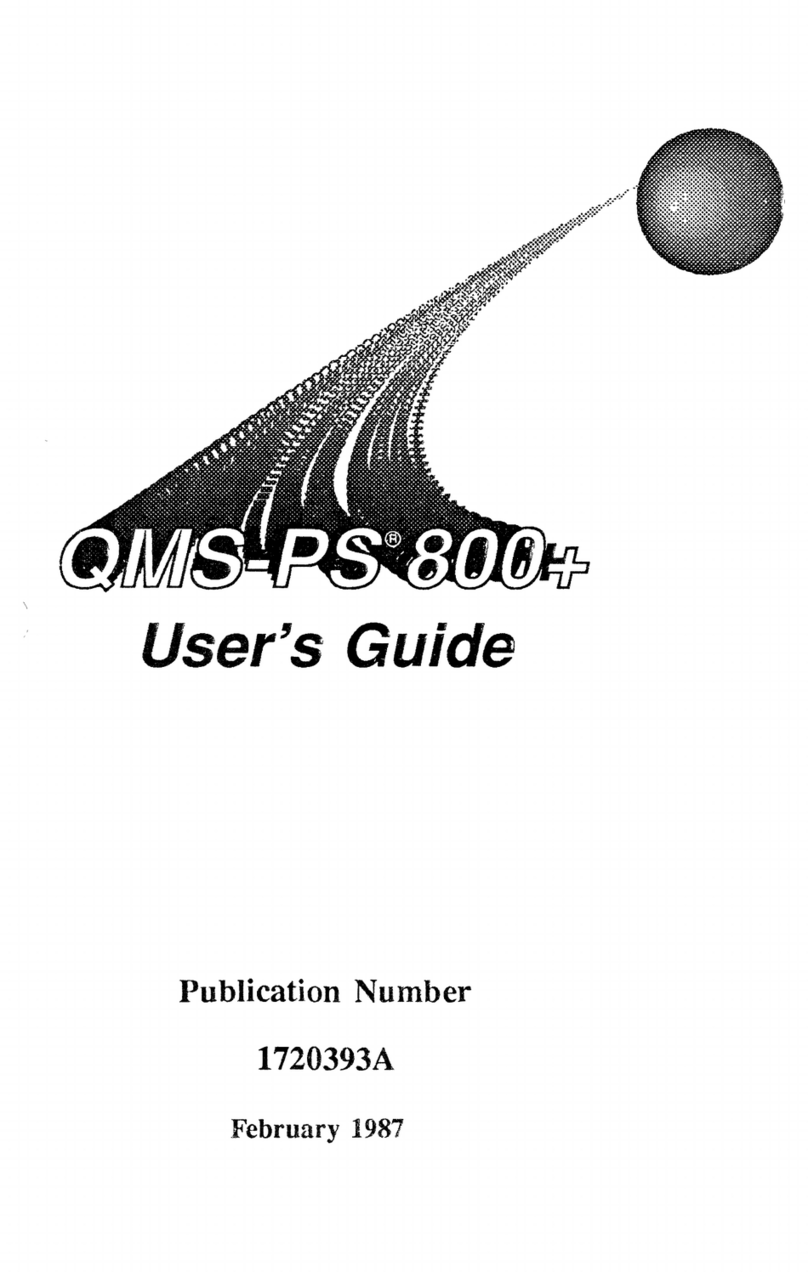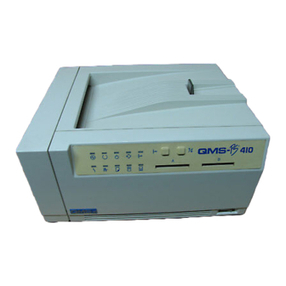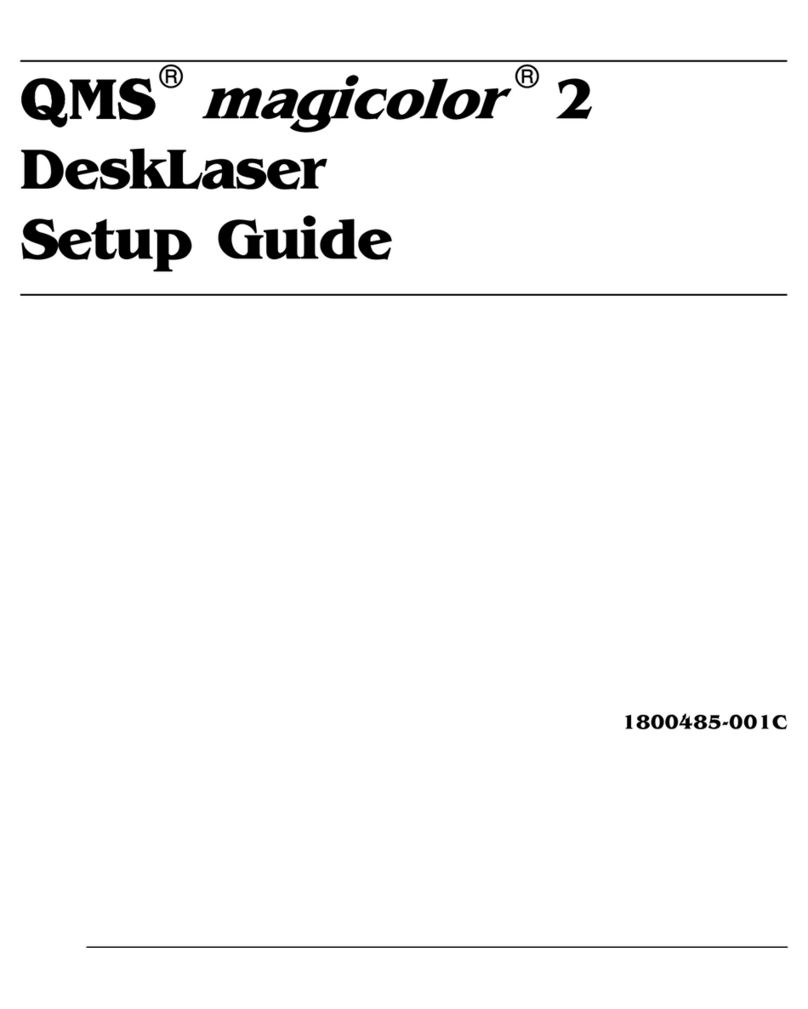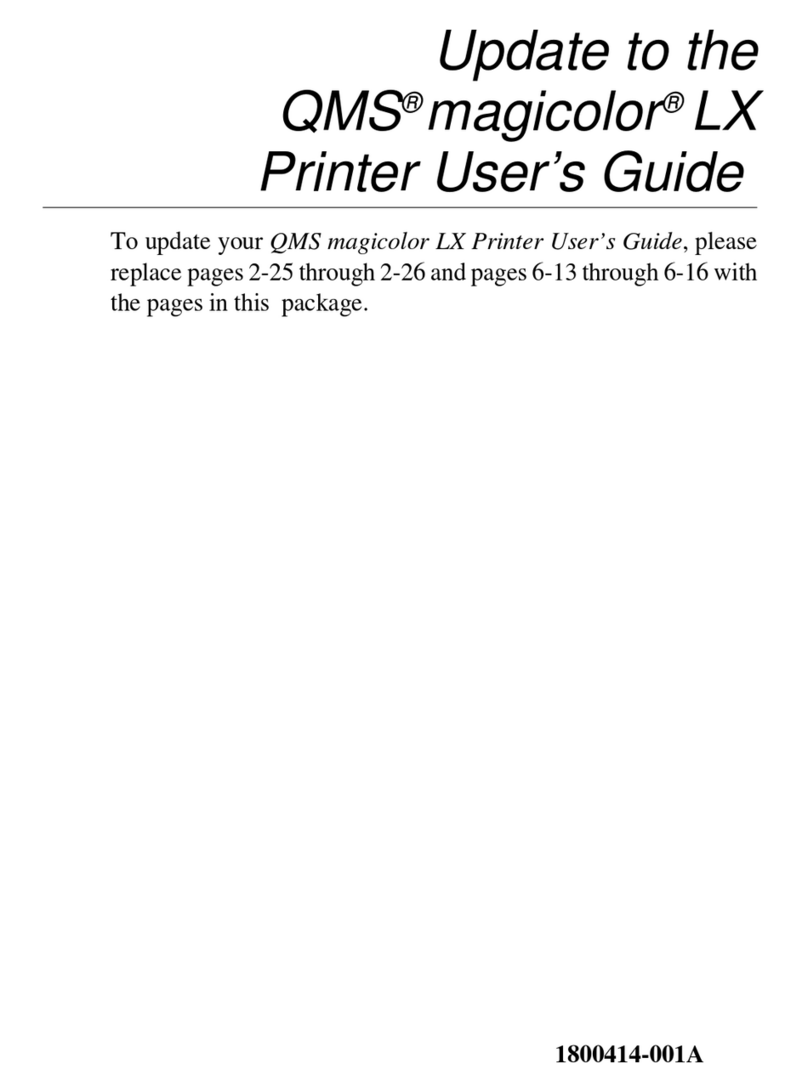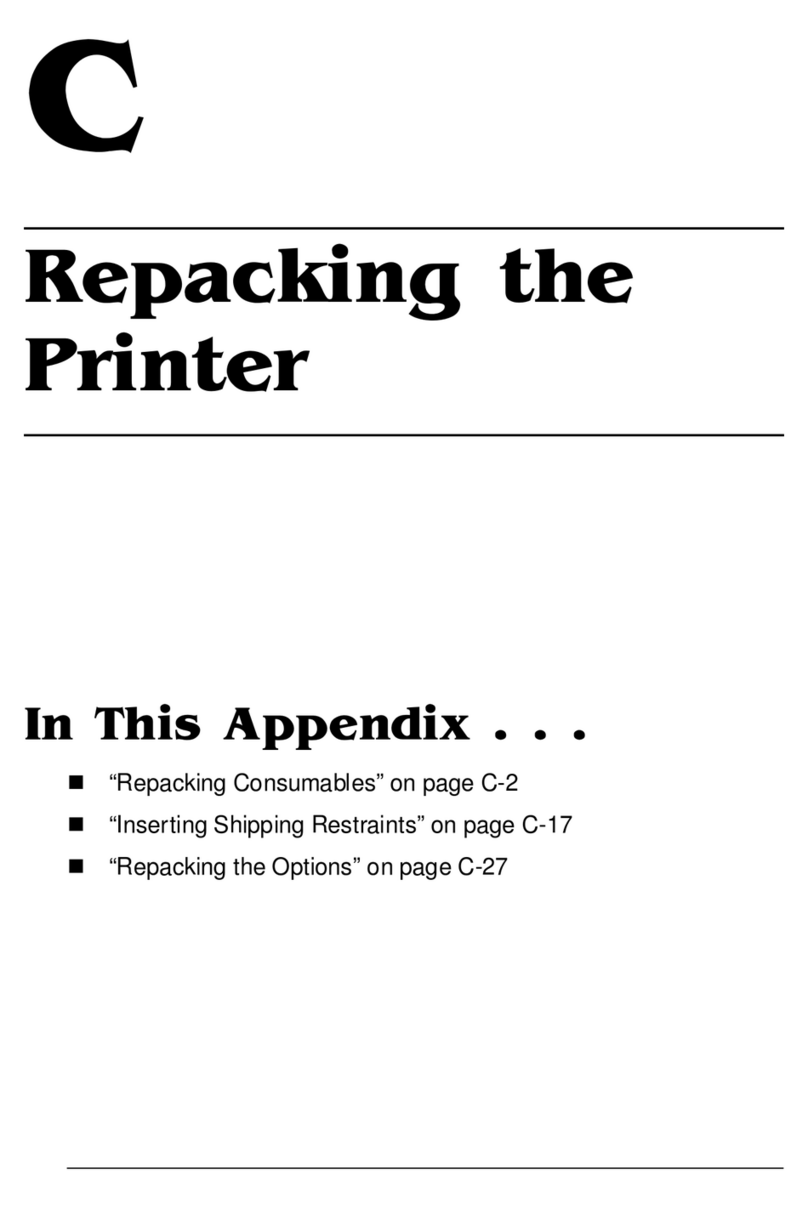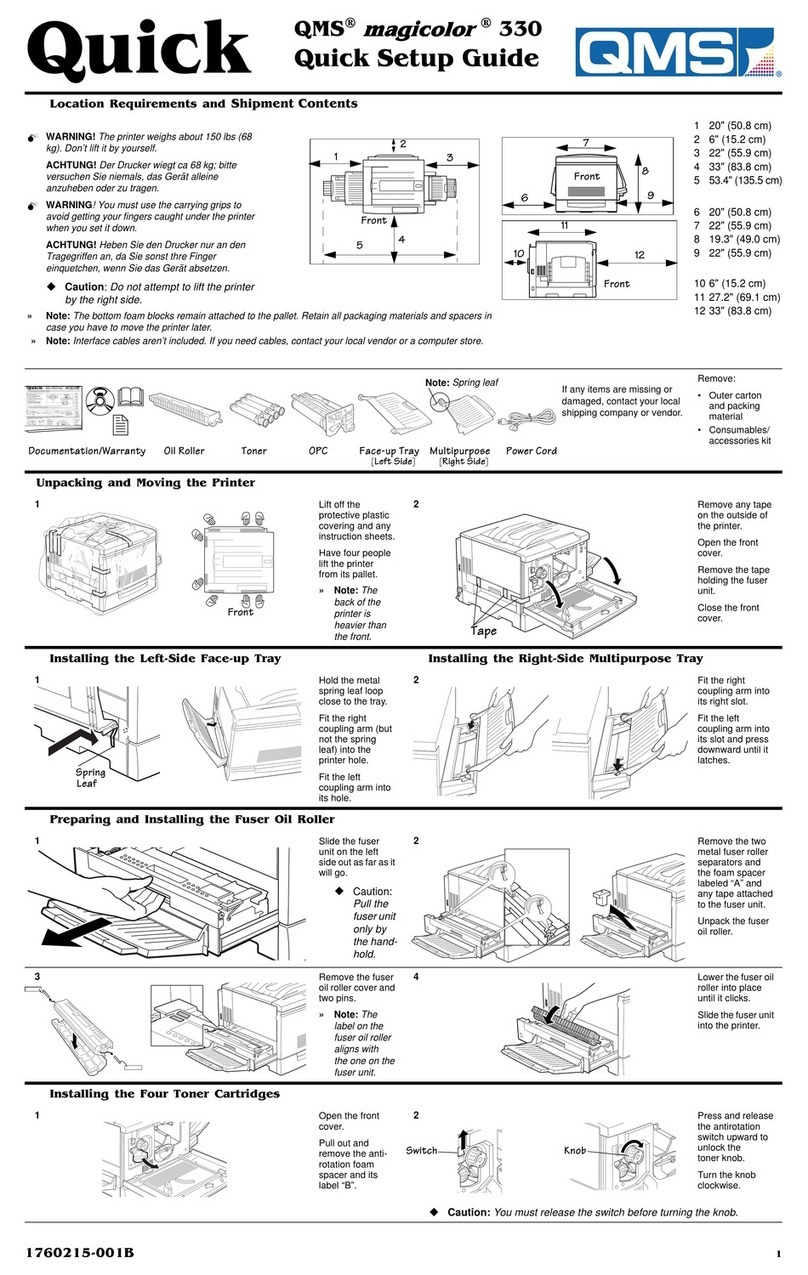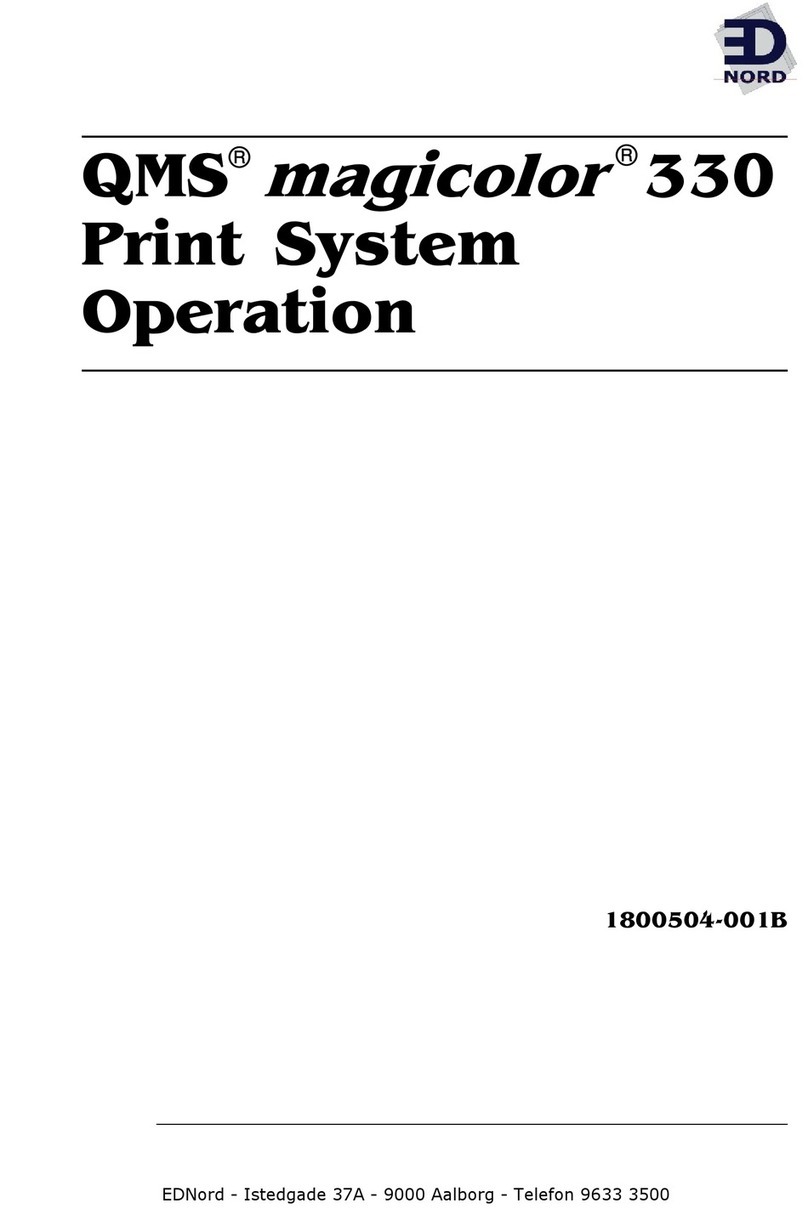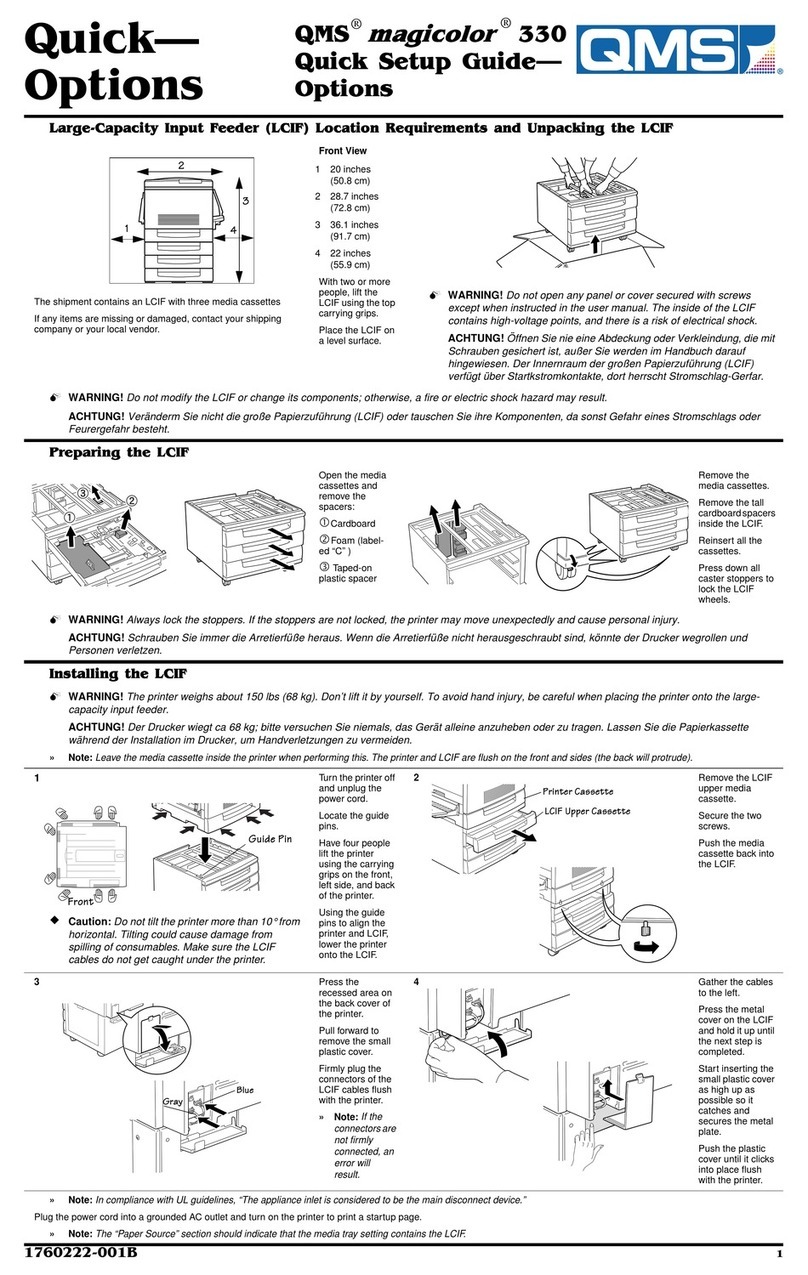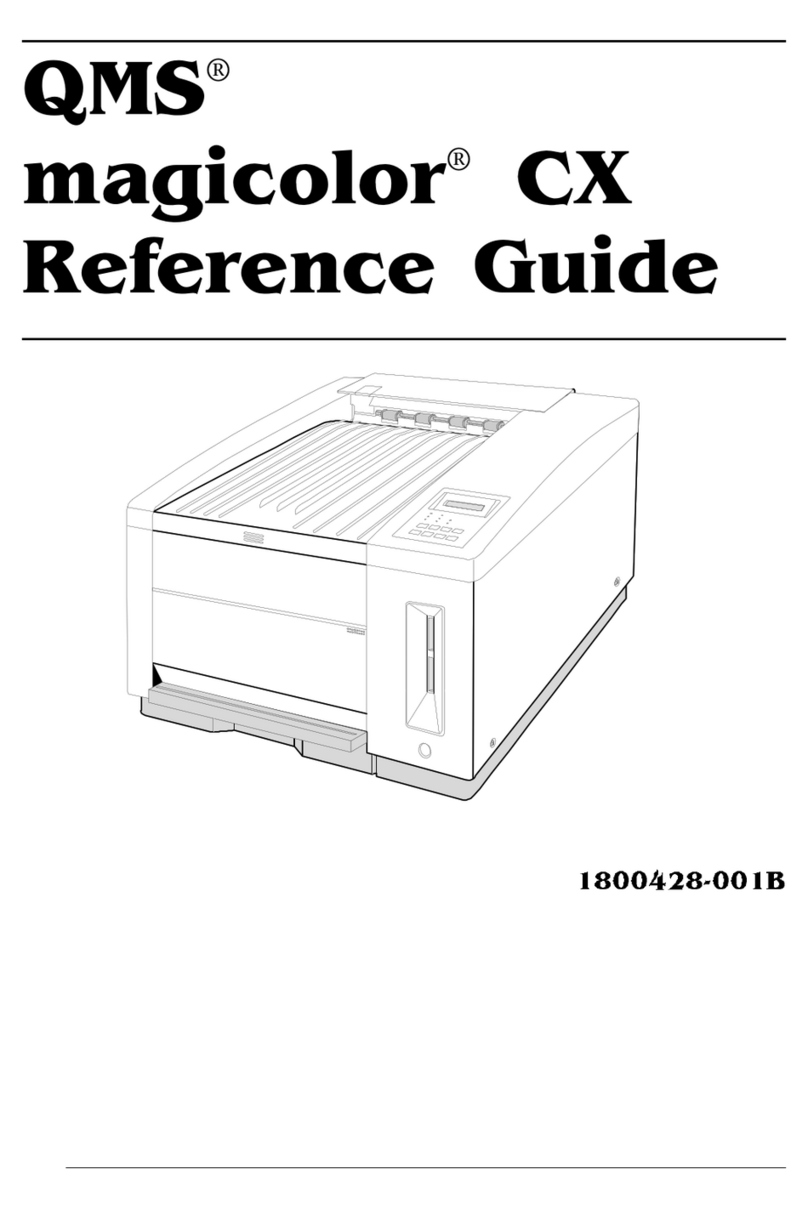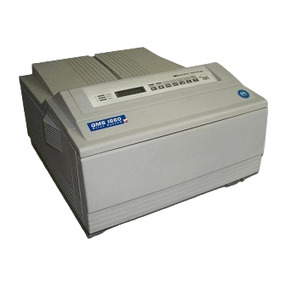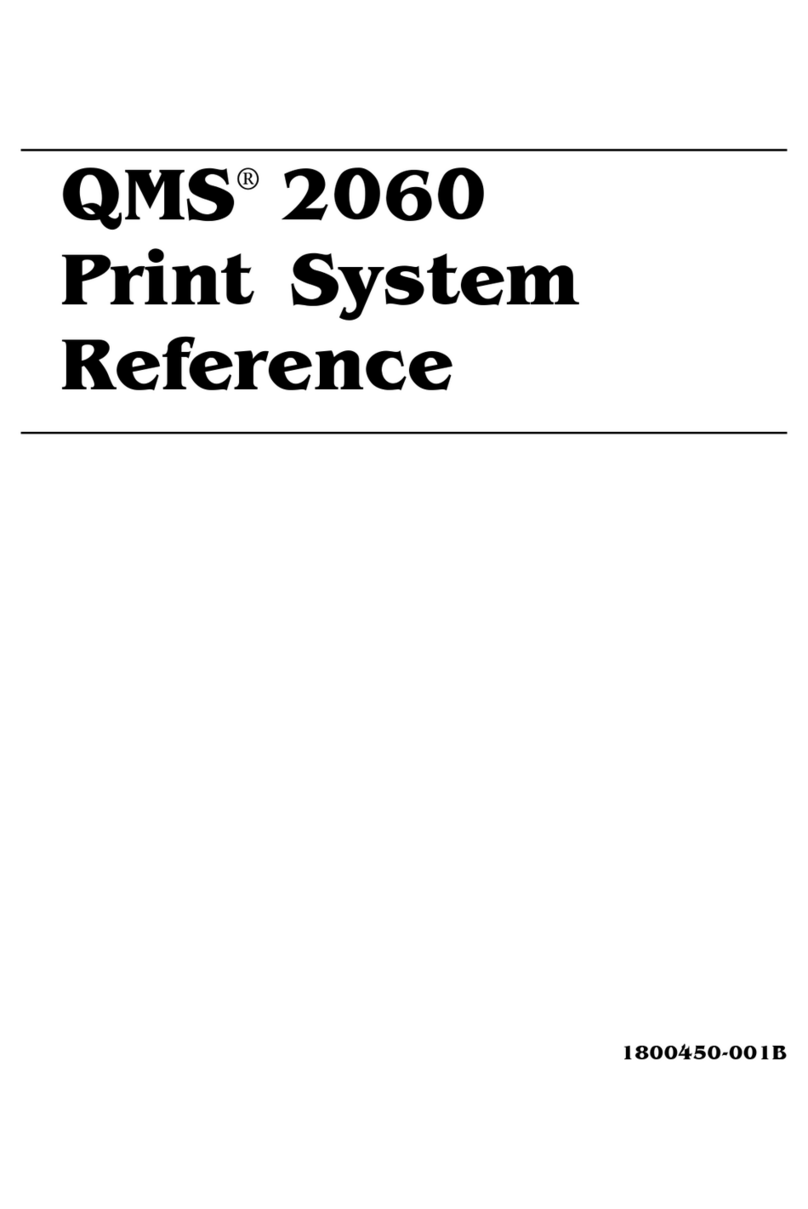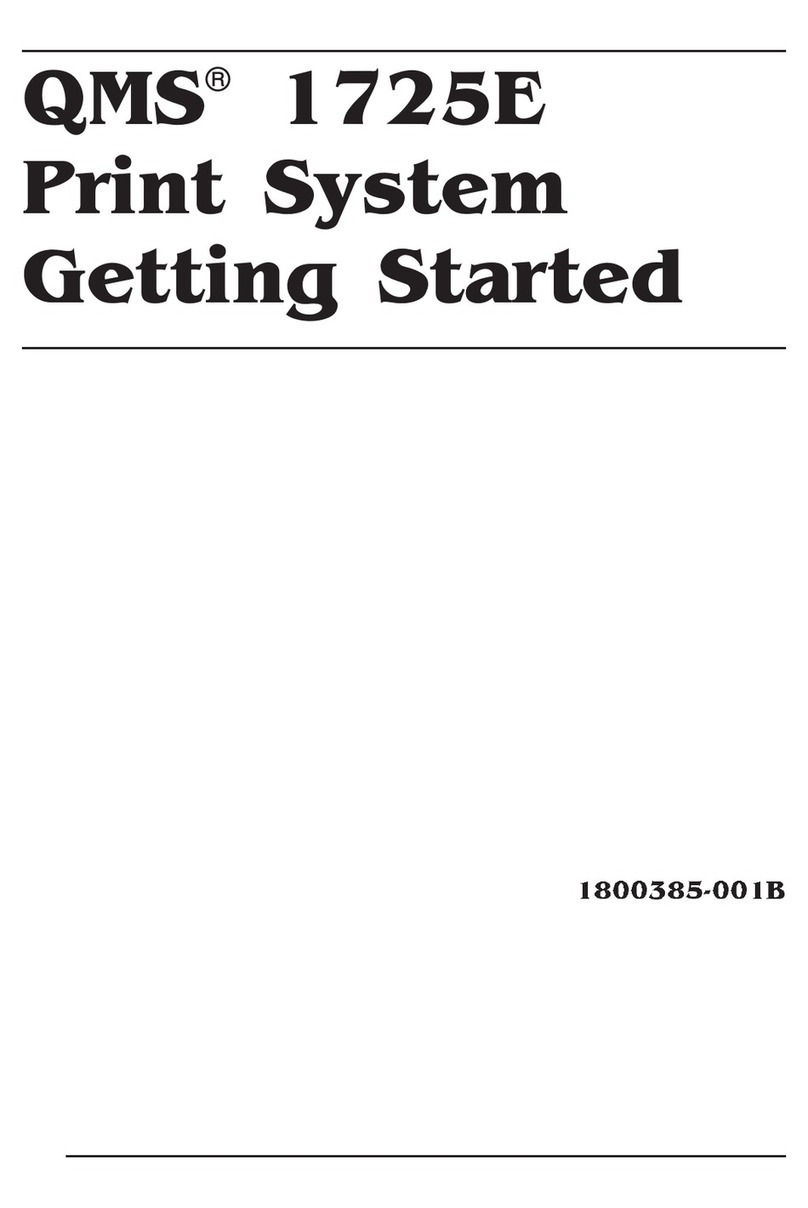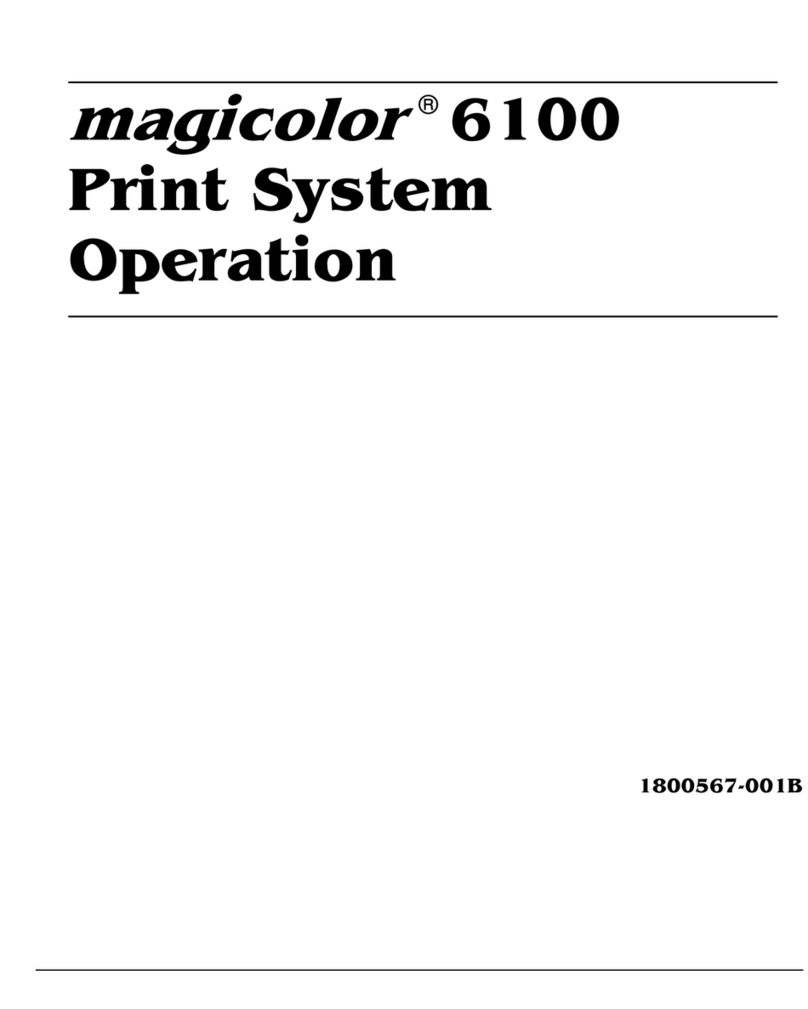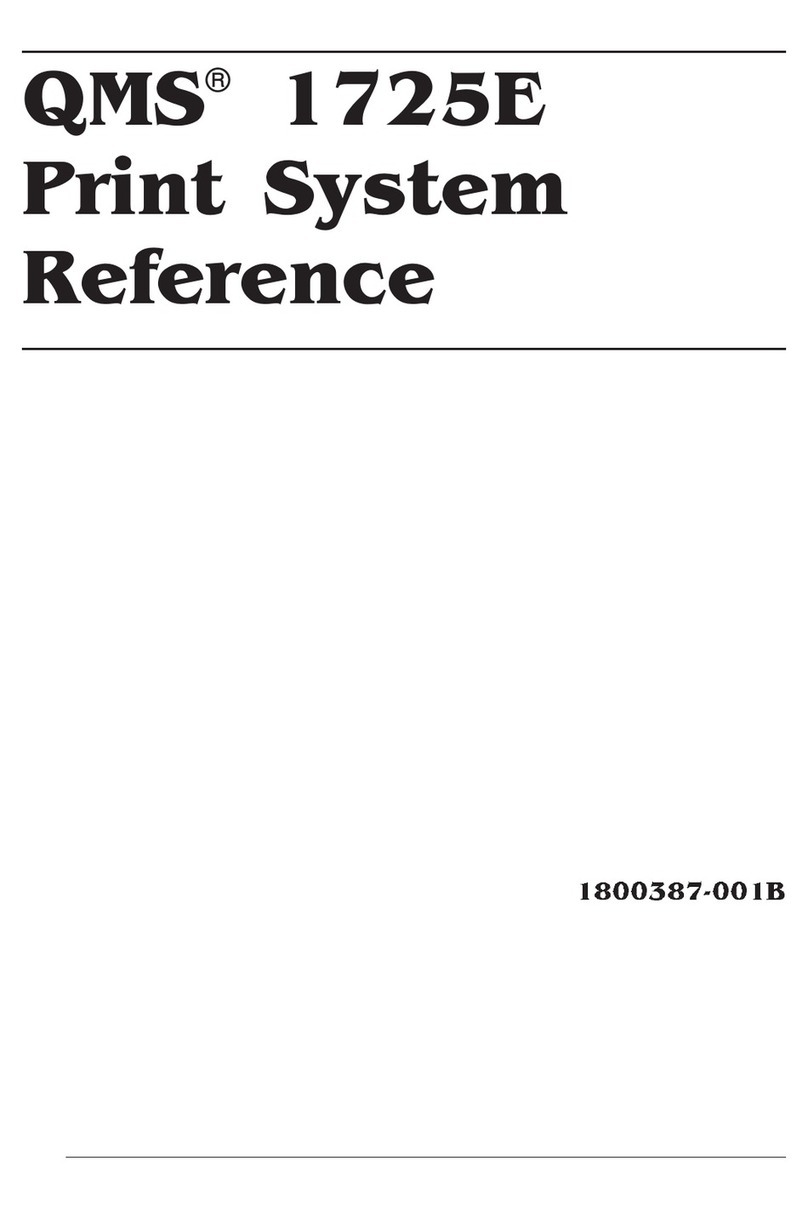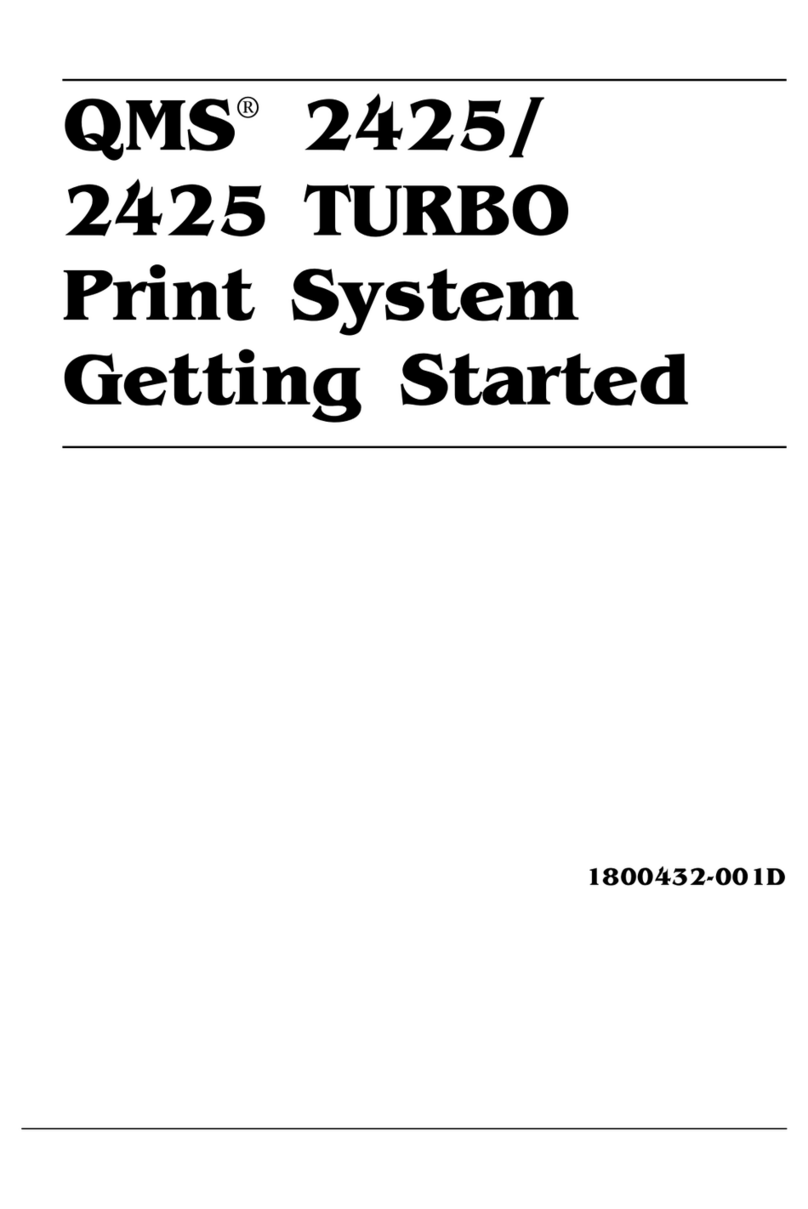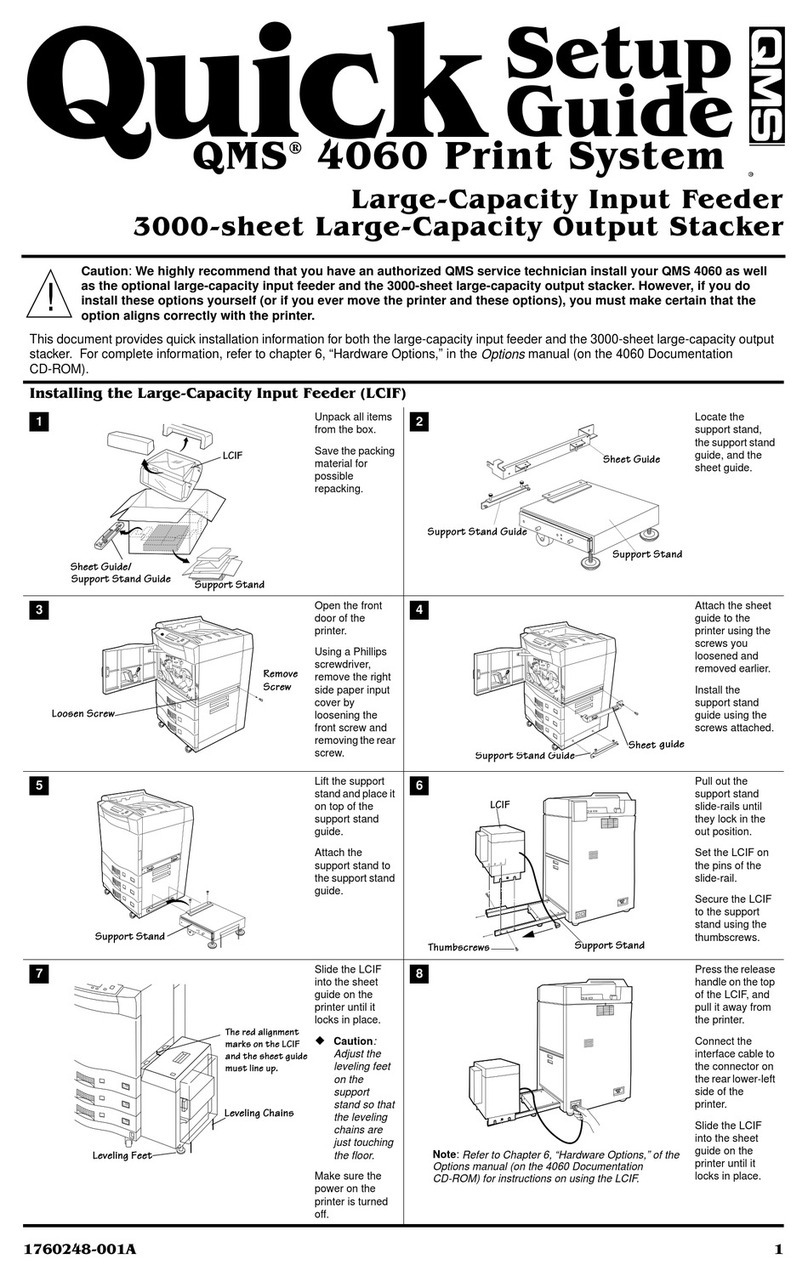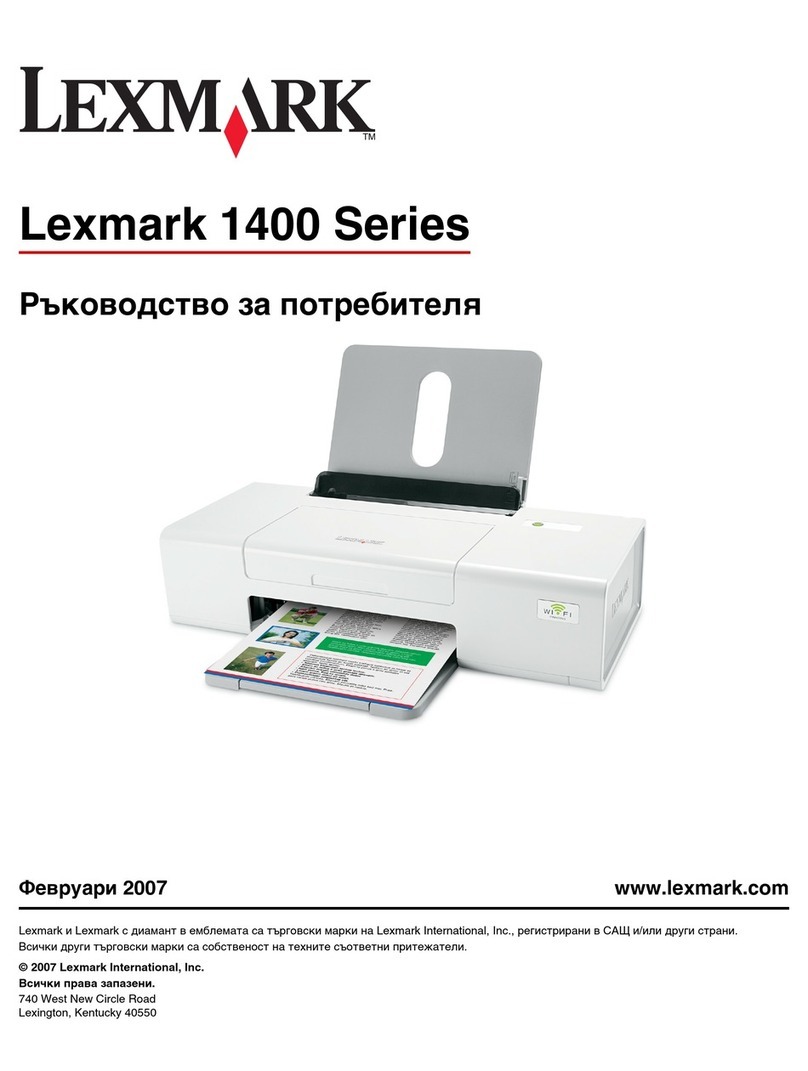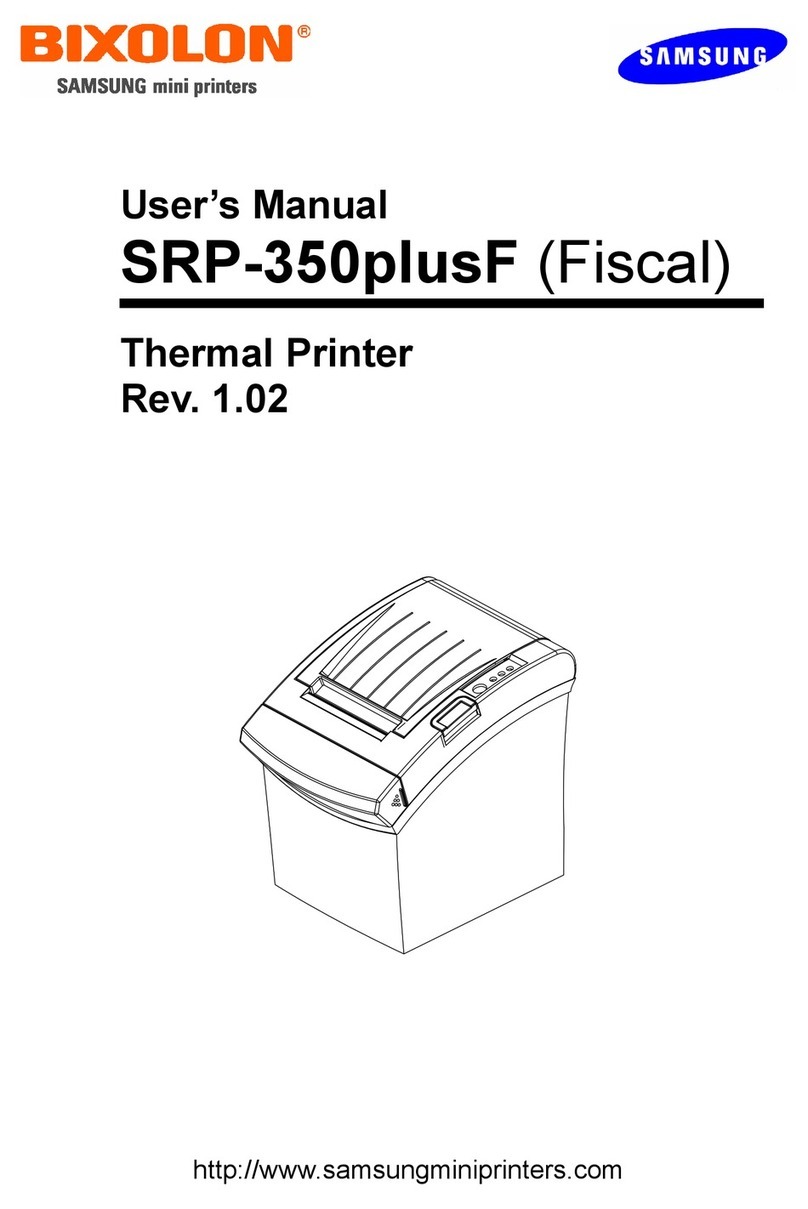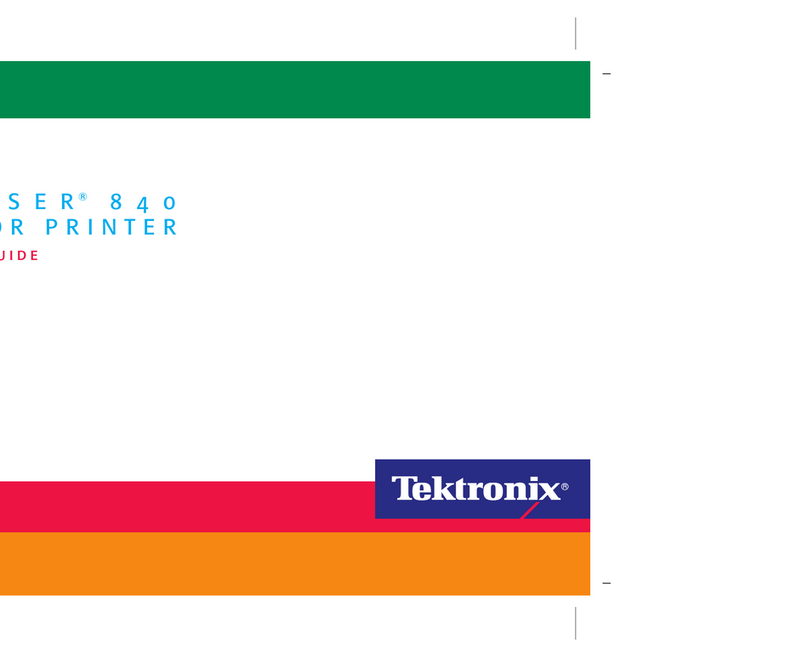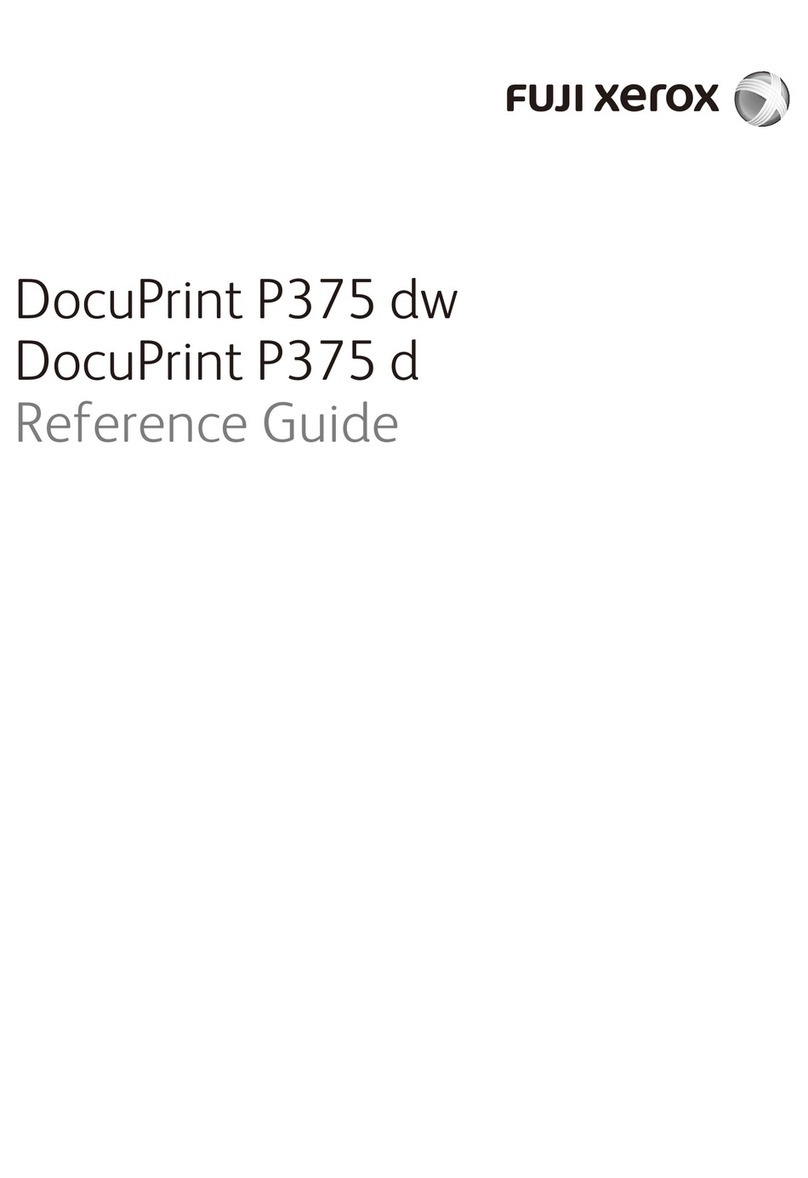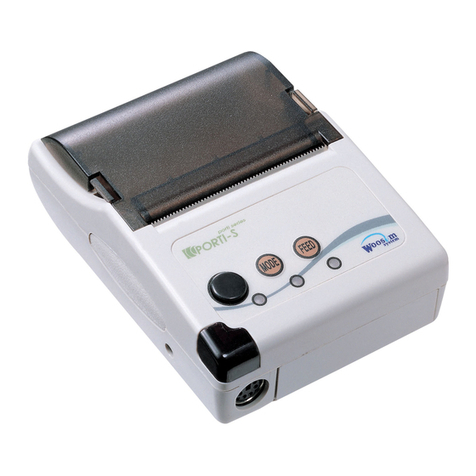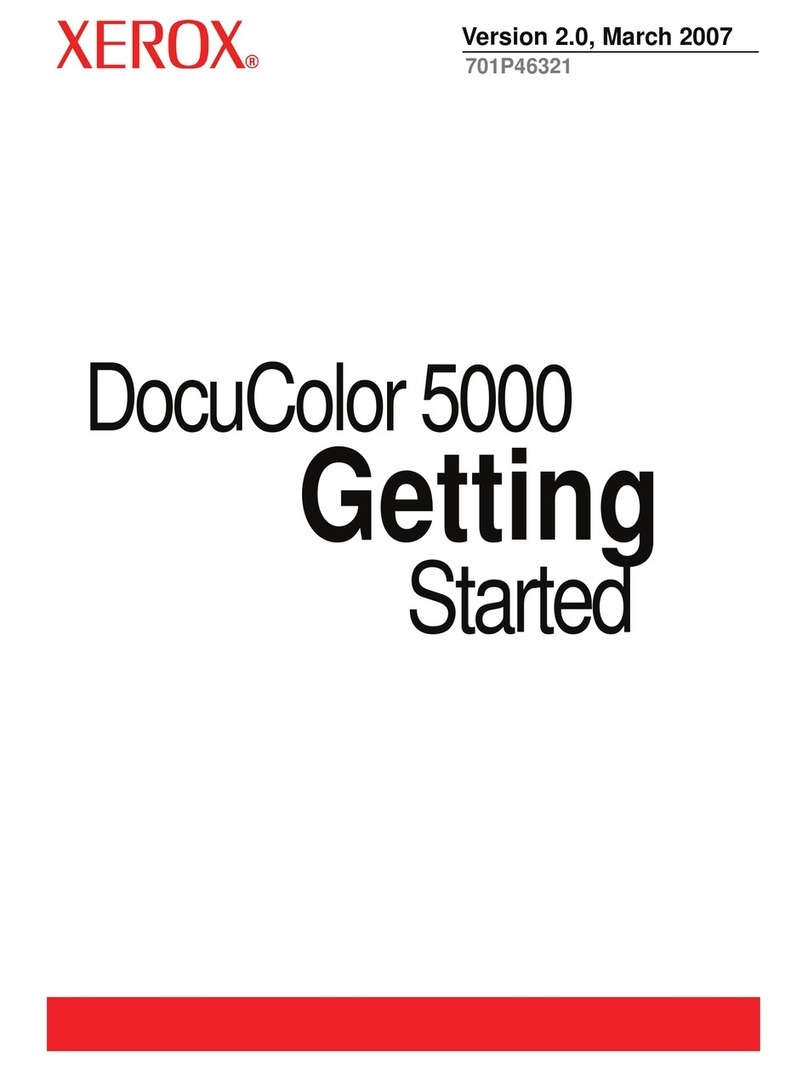
Trademarks
The following are trademarks or registered trademarks of their respective owners.
Those listed as registered are registered in the United States Patent and Trademark
Office. Some trademarks are also registered in other countries. Other product names
mentioned in this manual may be trademarks or registered trademarks of their
respective owners. QMS, the QMS logo, Crown, the Crown seal, PS Executive Series/
QMS, Inc. Adobe is a registered trademark of Adobe Systems Incorporated, registered
in the United States Patent and Trademark Office. PostScript is a trademark of Adobe
Systems Incorporated for a page description language and may be registered in certain
jurisdictions. Throughout this manual, “PostScript Level 2” is used to refer to a set of
capabilities defined by Adobe Systems for its PostScript Level 2 page description
language. These capabilities, among others, are implemented in this product through a
QMS-developed emulation that is compatible with Adobe's PostScript Level 2 language.
Adobe, Adobe PhotoShop, Adobe PageMaker/Adobe System Incorporated. Intellifont/
Agfa Division, Miles, Inc. Apple, AppleShare, AppleTalk, ImageWriter, LaserPrep,
LaserWriter, Macintosh, EtherTalk, LocalTalk, and TrueType/Apple Computer, Inc.
Centronics/Centronics Data Computer Corporation. CompuServe/H & R Block. DEC,
DECnet, VMS, LN03/Digital Equipment Corporation. PhoneNet/Farallon Computing.
Hewlett-Packard, HP, PCL, HP-GL, LaserJet/Hewlett-Packard Co. IBM PC, AT, PC/XT,
Token-Ring/International Business Machines Corporation. ITC Avant Garde Gothic, ITC
Zapf Chancery, ITC Bookman and ITC Zapf Dingbats/International Typeface
Corporation. Helvetica, Palatino, and Times/Linotype-Hell AG and/or its subsidiaries.
Intel/Intel Corporation. Aldus FreeHand/Macromedia, Microsoft, MS-DOS, and
Windows/Microsoft Corporation. Gothic Medium BBB and Ryumin Light KL/Morisawa
and Company, Ltd. Novell and NetWare/Novell, Inc. QuarkXPress/Quark, Inc. TOPS/
Sun Microsystems, Inc. TypeBank/TypeBank, Ltd. UNIX/UNIX Systems Laboratories,
Inc. Ethernet and Xerox/Xerox Corporation. Samsung/Samsung Electronics Company,
Ltd. The ENERGY STAR logo/United States Environmental Protection Agency. The
ENERGY STAR emblem does not represent EPA endorsement of any product or
service.
Proprietary Statement
The digitally encoded software included with your QMS 1060 Print System is
Copyrighted © 1995 by QMS, Inc. All Rights Reserved. This software may not be
reproduced, modified, displayed, transferred, or copied in any form or in any manner or
on any media, in whole or in part, without the express written permission of QMS, Inc.
Copyright Notice
This manual is Copyrighted © 1995 by QMS, Inc., One Magnum Pass, Mobile, AL
36618. All Rights Reserved. This manual may not be copied in whole or in part, nor
transferred to any other media or language, without the express written permission of
QMS, Inc.
